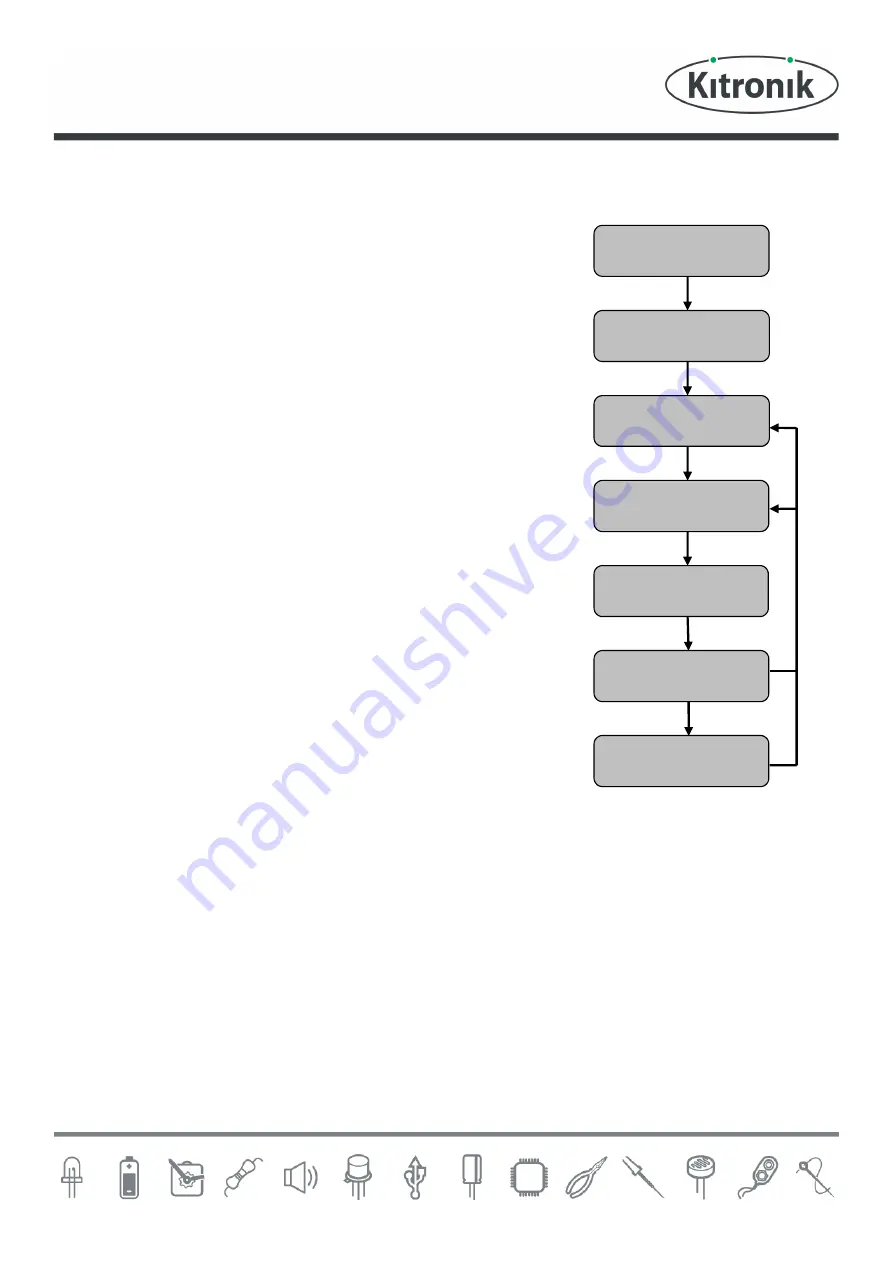
High Power Amp Teaching Resources
www.kitronik.co.uk/2143
The Design Process
The design process can be short or long, but will always consist of a number of
steps that are the same on every project. By splitting a project into these
clearly defined steps, it becomes more structured and manageable. The steps
allow clear focus on a specific task before moving to the next phase of the
project. A typical design process is shown on the right.
Design brief
What is the purpose or aim of the project? Why is it required and who is it
for?
Investigation
Research the background of the project. What might the requirements be?
Are there competitors and what are they doing? The more information found
out about the problem at this stage, the better, as it may make a big
difference later in the project.
Specification
This is a complete list of all the requirements that the project must fulfil - no
matter how small. This will allow you to focus on specifics at the design stage
and to evaluate your design. Missing a key point from a specification can
result in a product that does not fulfil its required task.
Design
Develop your ideas and produce a design that meets the requirements listed
in the specification. At this stage it is often normal to prototype some of your
ideas to see which work and which do not.
Build
Build your design based upon the design that you have developed.
Evaluate
Does the product meet all points listed in the specification? If not, return to the design stage and make the required
changes. Does it then meet all of the requirements of the design brief? If not, return to the specification stage and
make improvements to the specification that will allow the product to meet these requirements and repeat from
this point. It is normal to have such iterations in design projects, though you normally aim to keep these to a
minimum.
Improve
Do you feel the product could be improved in any way? These improvements can be added to the design.
Design Brief
Investigation
Specification
Design
Build
Evaluate
Improve







































